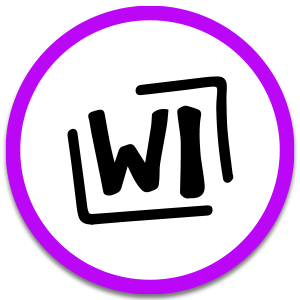An Interview with Helen Zughaib
Interview by Nicole Araya
Where does this scene take place? Is this based on a particular place and group of women?
This piece came from my memories of living in the Middle East. Of women gathering at that certain time of day, shortly before evening falls, a few moments to catch their breath after a long day’s work, and before the evening dinner preparations begin, a moment to rest, be calm, before they are pulled back into the relentless calls of children and family work.
Still Moment Before Dusk has a very unique color scheme of deep blues and pinks. How did you choose colors for this work and for your other works in general?
Yes, I chose these specific colors echoing the colors of dusk. After the intense heat and bright sun of daytime, and before the sky turns dark, those blues, pinks and oranges that turn everything into a shimmery tranquil blue, softening the hard edges of the day’s bright light. In general, as I visualize my next painting, I try to “see” the colors I would like to use, to best portray my new painting. I picture it in my mind, as a whole painting and get a feeling for the colors I would like to use.
How do you think your move to America for Syracuse shaped your artistic process and works as a whole?
I got an amazing education at Syracuse University, towards my career as an artist. I learned to use the paint I mostly use until today, gouache, and had some great professors who encouraged me in my studies as an artist. As far as moving to America to study art at Syracuse, I would have no idea at that point that it would be so long before returning to Lebanon after the war there. 35 years. Now I have lived in America longer than my time in the Middle East. Being here, especially during critical times, such as 9/11 and the two wars we are in, one in Iraq and the other Afghanistan, as well as participation in Syria’s civil war and in Yemen, forces me to confront many issues that arise as a result of these wars and of me as an Arab American. Challenging negative stereotypes, creating a more positive dialogue, primarily between East and West, telling our own stories and hopefully achieving mutual respect and a new understanding, has become critical to me and my work.
In many of your other works you include facial details and expressions. For this piece the figures are somewhat anonymous in their lack of such details. Why did you choose to make the figures faceless?
Yes, in general I do choose to paint the face of my subjects, but in Still Moment, chose to purposely leave them out, creating an anonymity I felt was important to stress the universality of these women, their continuous work, their challenges, their comfort and solidarity in one another, their reliance on each other for strength and courage especially when faced with adversity.
Who has been your greatest artistic mentor?
I have had several, from my professors, to artists, ranging from Henry Moore, to Jacob Lawrence, Mondrian, Matisse, Rousseau and Gauguin. Iraqi and Lebanese artists as well, Mohamad Ghani, an Iraqi sculptor, Wajih Nahle, Jean Khalife and Chafiq Abboud, all Lebanese painters, that I grew up seeing their work in our home. And there have been some incredible curators who have supported my work over the years.
You have a very distinctive style of layering many eye-catching colors and patterns. Where does the inspiration for your elaborate patterns come from?
I love using pattern and color in my work, creating “new” landscapes of patterned abstraction. The colors and patterns I grew up with in the Arab world from textiles to tiles and ceramics, they were an important and inescapable part of my life. I also have used Arabic calligraphy as a “pattern” if you will, in several newer pieces. Taking freedoms with the letters, creating even another layer or veil of discovery. The paint I use, gouache, lends itself to a very flat quality, I use this characteristic of the paint to further enhance that two dimensional “look” of my work.
What advice would you have for aspiring artists that are seeking to showcase some element of their identity or personal experiences into their works?
I think it is very important for artists of all backgrounds, especially now in this fraught political climate we are living in, to express their own truths, their own stories and realities. They will resonate with people who share their same identity and if not, perhaps inspire some new understanding, new appreciation for this shared experience called humanity. If you have a story to tell, tell it. Someone will listen.



